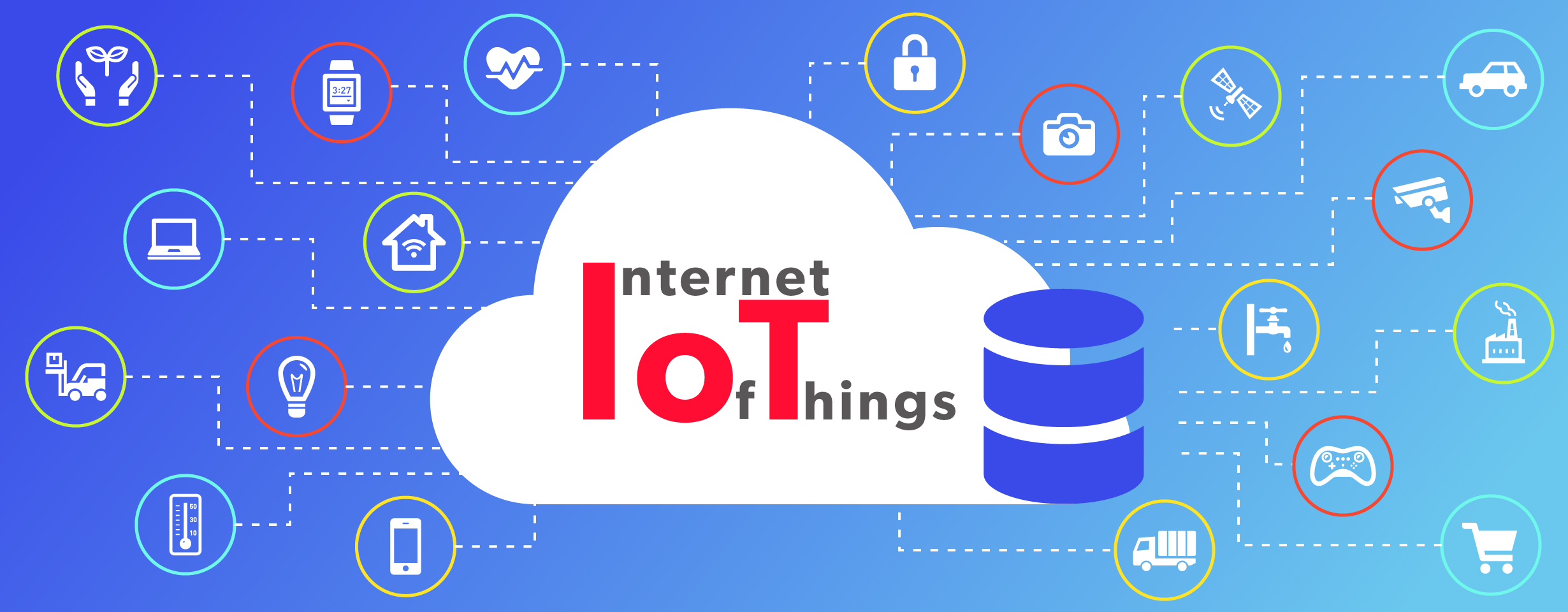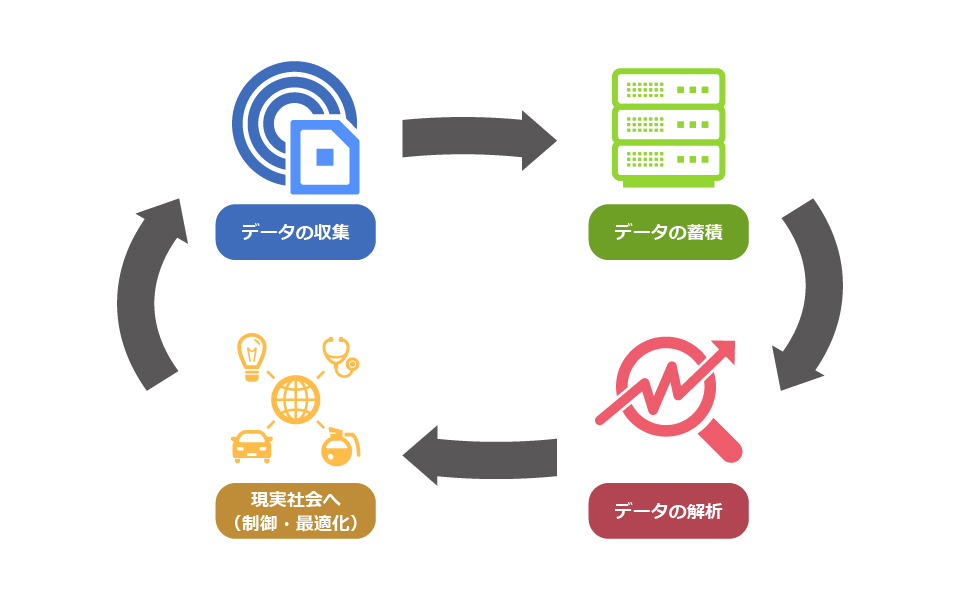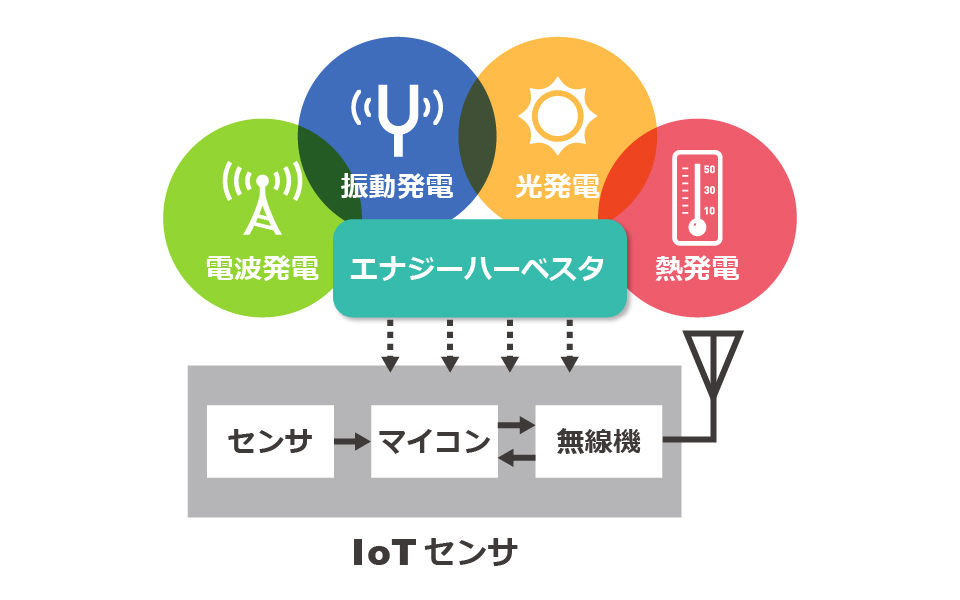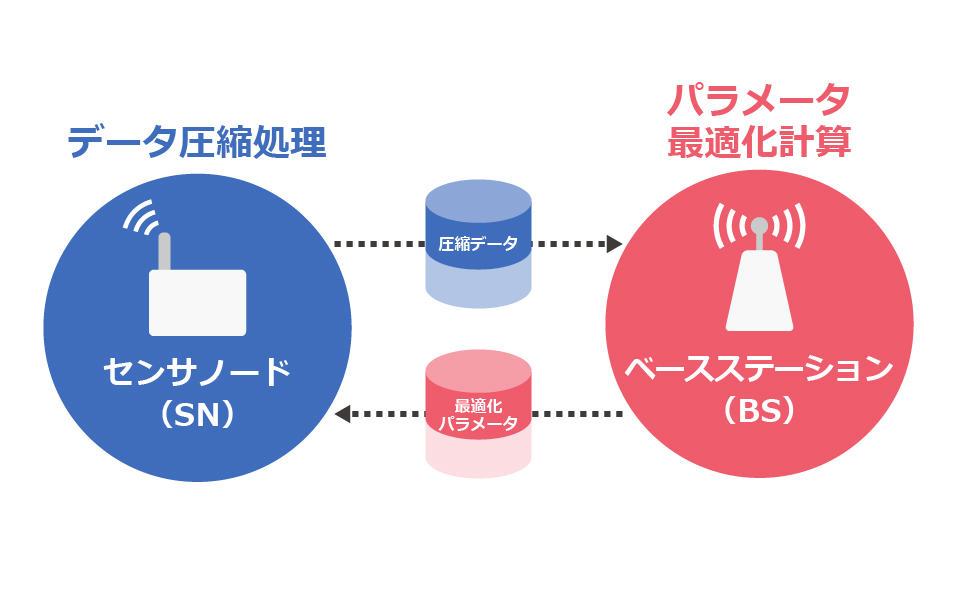IoT
IoTとは
IoT(Internet of Things)とは,スマートフォンやコンピュータといった情報・通信機器だけでなく,様々なモノにセンサが取り付けられ,さらにそれらのモノが通信機能を有し,インターネットに接続して相互通信を行う仕組みです.
IoTにより何ができるようになるか
無線機能と簡単なデータ処理能力をつけたセンサのことを「センサノード」といいます.このセンサノードによって現実世界のあらゆる情報を収集し,インターネットを通じてデータを集約しクラウド上で解析します.その解析結果に従って現実社会のデバイスやサービスの制御・最適化等を行います.
センサノードによって身の回りの空間の情報がわかるようになれば,色々な応用ができます.ざっと挙げるだけでも,ウェアラブルデバイス・スマートシティ・スマート工場・スマート農業・スマートハウス・構造物ヘルスモニタリング・在庫管理最適化システム・自動運転システム等々があり,幅広い分野でIoT向けセンサノードが展開されることが予想されます.
たとえばウェアラブルデバイスで体温・心拍数・カロリー消費・睡眠の質などを計測します.これらの情報を複合的に分析し,生活習慣の改善や病気の予防を行います.
また車々間通信や路車間通信などに応用すれば,ITS社会の実現に一役買えます.道路にセンサを設置してネットワーク化すれば,交通量調査システムを必要なときに展開できるので,細やかな道路行政が実施できます.
スマート農業では,土壌の水分量,天気などの情報から散水する量を最適化し遠隔制御ができます.これにより農家の人の負担を減らし,生産性を向上させることができると考えられます.
IoTの課題
大規模データ収集システムであるIoT社会が実現するためには,センシングで得られた飛躍的に増大するデータがセキュリティを確保しつつ,インターネットを通じて効率的に収集・解析され,現実社会に適時適切にフィードバックされる仕組みを構築する必要があります.
しかし,現在市販されているデータ収集システム端末であるセンサノードは消費電力が大きく,無給電の場合頻繁な電池交換作業が必要なことが大規模データ収集システムの普及の障害となっています.
IoTの課題を端的に表すと「センサノードの平均消費電力を小さくして,いかにシステムを長寿命化・高信頼化するか」ということです.センサやマイコンといったハードウェア自体を低消費電力にすることはもちろん必要ですが,プロトコルを工夫して無駄な通信を減らすことも必要となってきます.また,知的適応制御による高度な電源管理,各回路ブロックの動作スケジューリングにより,センサノード全体で消費電力を低減させる技術開発を行います.
研究内容
上記の問題を解決すべく,主に次の2つの研究を行っています.
1. IoTセンサ向け環境発電とセンシングの水平協調手法
大量のセンサノードを配置するIoT応用では,バッテリの交換が大きな課題となっています.センサノードに供給する電力をバッテリではなく,振動・光・熱・電波といったエナジーハーベスタ(環境発電)から得れば理論上半永久的にセンサノードは動作し続けます.しかし,エナジーハーベスタからの電力は大きくありません.そこで本研究ではエナジーハーベスタ技術とセンシング技術を協調させることで,無給電で半永久的に動作するセンサシステムを実現します.
2. IoTセンサ向けネットワーク協調型データ圧縮・削減手法
センサノードでは無線通信回路が大きな電力を消費します.そこでセンサノードで取得したデータをベースステーション(サーバー)に送信する際にデータを圧縮します.これにより送信時に消費する消費電力を削減します.本研究では単にセンサノードでデータを圧縮するだけでなく,ベースステーションとセンサノードがネットワーク越しに連携して圧縮時に用いられるパラメータを最適化することで,より一層通信回路の動作時間を削減し,低消費電力化を実現します.



